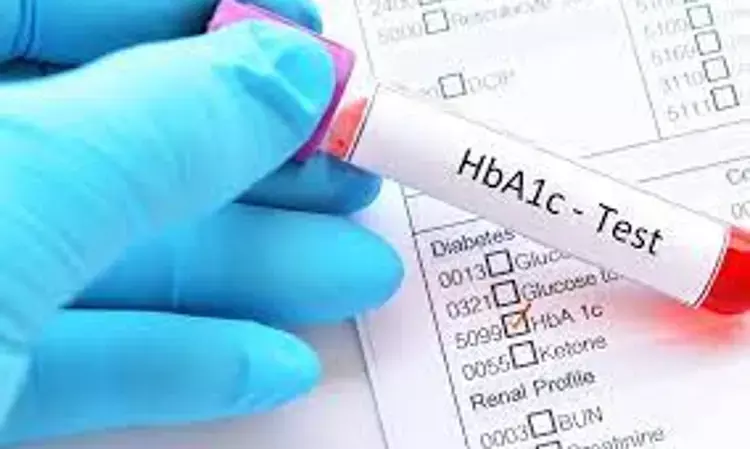- Home
- Medical news & Guidelines
- Anesthesiology
- Cardiology and CTVS
- Critical Care
- Dentistry
- Dermatology
- Diabetes and Endocrinology
- ENT
- Gastroenterology
- Medicine
- Nephrology
- Neurology
- Obstretics-Gynaecology
- Oncology
- Ophthalmology
- Orthopaedics
- Pediatrics-Neonatology
- Psychiatry
- Pulmonology
- Radiology
- Surgery
- Urology
- Laboratory Medicine
- Diet
- Nursing
- Paramedical
- Physiotherapy
- Health news
- Fact Check
- Bone Health Fact Check
- Brain Health Fact Check
- Cancer Related Fact Check
- Child Care Fact Check
- Dental and oral health fact check
- Diabetes and metabolic health fact check
- Diet and Nutrition Fact Check
- Eye and ENT Care Fact Check
- Fitness fact check
- Gut health fact check
- Heart health fact check
- Kidney health fact check
- Medical education fact check
- Men's health fact check
- Respiratory fact check
- Skin and hair care fact check
- Vaccine and Immunization fact check
- Women's health fact check
- AYUSH
- State News
- Andaman and Nicobar Islands
- Andhra Pradesh
- Arunachal Pradesh
- Assam
- Bihar
- Chandigarh
- Chattisgarh
- Dadra and Nagar Haveli
- Daman and Diu
- Delhi
- Goa
- Gujarat
- Haryana
- Himachal Pradesh
- Jammu & Kashmir
- Jharkhand
- Karnataka
- Kerala
- Ladakh
- Lakshadweep
- Madhya Pradesh
- Maharashtra
- Manipur
- Meghalaya
- Mizoram
- Nagaland
- Odisha
- Puducherry
- Punjab
- Rajasthan
- Sikkim
- Tamil Nadu
- Telangana
- Tripura
- Uttar Pradesh
- Uttrakhand
- West Bengal
- Medical Education
- Industry
Caution- Patients with anaemia may reveal false increase of HbA1c despite normal blood sugar levels

Haemoglobin A1c (A1c) has become the standard tool for monitoring glycemic control in patients with diabetes since it's clinical use was started in the 1970s. By it's addition as a diagnostic criterion for diabetes in 2010 by American Diabetes Association, the role of the A1c test was broadened. Because of hemoglobin A1c’s integral role in diagnosis and treatment, it is important to recognize clinical scenarios and interfering factors that yield false results. Researchers have revealed in an observational pilot study that caution is necessary while interpreting HbA1c as Patients of anemia may show false increase of HbA1c despite normal blood sugar levels. The study has been published in Cureus.
Over the past decades, glycosylated haemoglobin (HbA1c) has been a gold standard for monitoring diabetes control over a long period, relative to blood glucose level (BGL) which measures short-term results. It is speculated that anaemia and factors that induce haemolysis may cause falsely elevated HbA1c leading to 'false positive' interpretations. This study aimed to investigate how anaemia impacts HbA1c. This was a pathology-based observational pilot study using archived data of diabetic subjects monitored with both BGL and HbA1c in regional New South Wales (NSW), Australia. A total of 28,487 cases of blood glucose results were pooled and those with HbA1c and anaemia results were evaluated for correlation with the BGL results. Data collection was limited to de-identified information from the laboratory information system, hence details on the ethnicity and medical history were unavailable. Descriptive frequencies and Pearson correlations were performed. Results: In the pooled data, 53.36% of individuals were females, and 50.54% had BGL ≥5.6 mmol/L. In the pilot dataset, the majority (64.86%) were males, 18.92% with BGL ≤5.6 mmol/L and 67.57% had HbA1c (≥6.5%). In the entire dataset, BGL was moderately and positively correlated with HbA1c (r = 0.6), whereas in the subset of individuals with normo-BGL and anaemia, the correlation was negative (r = -0.2). This pilot investigation observed a pertinent issue, which is a negative correlation between glycaemia and HbA1c in patients with anaemia. HbA1c was falsely increased despite normal blood glucose levels in individuals with anaemia. This advances the speculation that anaemia falsely increases HbA1c. Therefore, caution is necessary while interpreting HbA1c results for patients with anaemia, and new methods for interpretation are required.
Reference:
Bwititi P, Wang L, Butkowski E, Nwose EU. Impact of Anaemia on HbA1c Interpretation Among Normogylcaemic Individuals With Diabetes Mellitus: A Clinical Laboratory Observational Study. Cureus. 2023 Dec 4;15(12):e49901. doi: 10.7759/cureus.49901. PMID: 38174171; PMCID: PMC10763517.
Keywords:
Caution, anemia patients, false increase HbA1c, normal blood sugar levels, Bwititi P, Wang L, Butkowski E, Nwose EU, Cureus, anaemia; diabetes control; haemoglobin a1c; lab interpretation; laboratory test.
Dr. Shravani Dali has completed her BDS from Pravara institute of medical sciences, loni. Following which she extensively worked in the healthcare sector for 2+ years. She has been actively involved in writing blogs in field of health and wellness. Currently she is pursuing her Masters of public health-health administration from Tata institute of social sciences. She can be contacted at editorial@medicaldialogues.in.
Dr Kamal Kant Kohli-MBBS, DTCD- a chest specialist with more than 30 years of practice and a flair for writing clinical articles, Dr Kamal Kant Kohli joined Medical Dialogues as a Chief Editor of Medical News. Besides writing articles, as an editor, he proofreads and verifies all the medical content published on Medical Dialogues including those coming from journals, studies,medical conferences,guidelines etc. Email: drkohli@medicaldialogues.in. Contact no. 011-43720751


